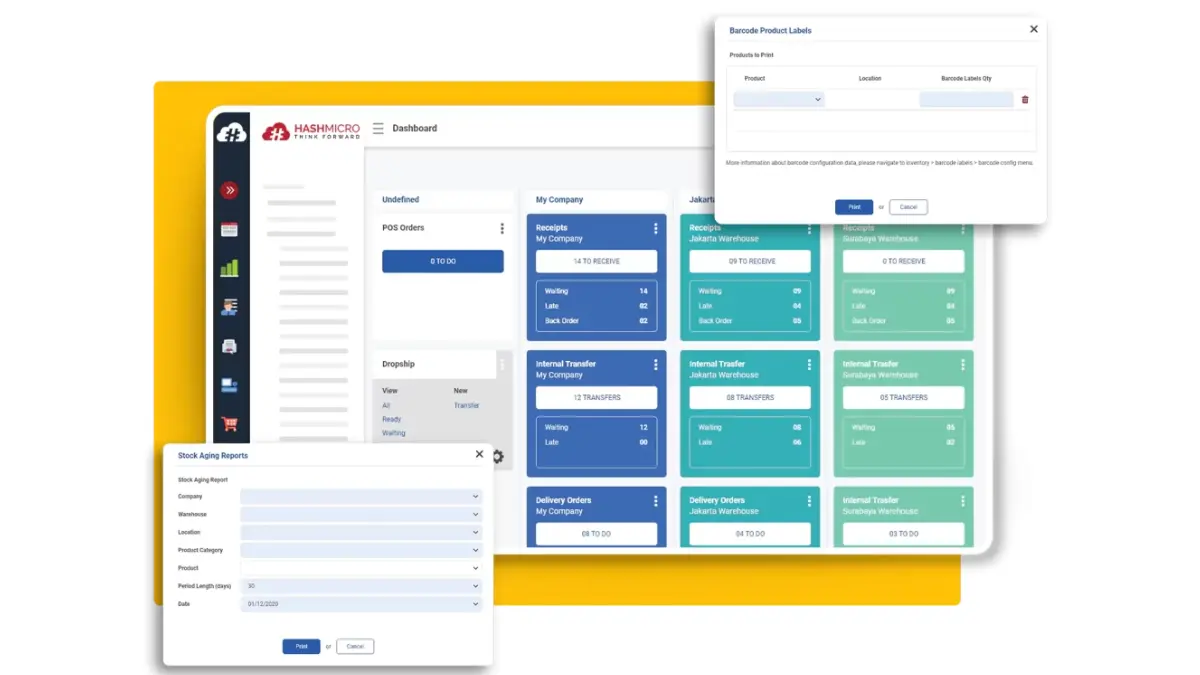Are you still managing your medical inventory with pen and paper? This traditional method is outdated and prone to errors, often leading to discrepancies in critical inventory levels. As healthcare requires precision and efficiency, manual tracking can significantly delay responses to patient needs, compromising care quality.
By implementing technologies into your business, you can significantly reduce the risk of errors and the inefficiencies associated with manual record-keeping. Read on to explore how easy transitioning to a digital system can be and the profound impact it can have on your operations.
Key Takeaways
|
Table of Contents
What is Medical Inventory Management?
Medical inventory management ensures healthcare facilities operate smoothly and without interruptions. It systematically organizes and controls all essential medical supplies and equipment, including medications and surgical tools. This process is crucial for maintaining optimal stock levels and efficiently utilizing resources.
The effectiveness of medical inventory management hinges on its ability to track consumption, storage, procurement, and disposal of items in real-time. By aligning inventory practices with patient care standards and demand forecasts, healthcare providers can optimize operations and improve service delivery.
The Importance of Effective Inventory Management in Healthcare
Effective inventory management in healthcare is crucial as it directly impacts patient care and operational efficiency. Maintaining optimal stock levels prevents shortages that can delay critical treatments and worsen health outcomes and avoids overstock to reduce waste and financial losses.
A recent study published in Benchmarking: An International Journal demonstrated that hospitals utilize probabilistic hybrid inventory models. These models blend various inventory techniques to optimize stock levels effectively, ensuring a balance that supports continuous patient care while reducing unnecessary expenditures.
Additionally, efficient inventory management enhances operational efficiency by automating processes. This automation cuts operational costs and boosts the facility’s responsiveness and sustainability, making it crucial as healthcare demands evolve globally.
Read More: Top Construction Inventory Management Software
Different Types of Medical Inventory
Understanding the different types of medical inventory is crucial for efficient management. Several types of medical inventory categorize themselves, each playing unique roles within the healthcare supply chain. Here are the types:
| Types | Explanation |
|---|---|
| Standard Inventory | Includes commonly used medical supplies such as gloves, syringes, and regularly stocked bandages. Critical for day-to-day operations in any healthcare facility. |
| Serialized Inventory | Items that require unique identification, such as medical devices and high-value equipment. |
| Batch/Lot Inventory | Grouping items that were produced or received at the same time. Manage items like vaccines with expiration dates to ensure their safe and efficient use. |
| Non-Inventory Items | Consumables and supplies that are not typically tracked in inventory, such as cleaning agents. Essential for maintaining a hygienic healthcare environment. |
Each category of medical inventory serves a specific purpose and requires different management strategies. Understanding these distinctions is vital for implementing effective inventory control measures, significantly enhancing the operational efficiency and quality of patient care in healthcare settings.
To find the right solution for your healthcare facility, get an accurate price quote tailored to your needs. Click the banner below to learn more and discover how HashMicro’s medical inventory software can optimize your operations and improve inventory management.

Effective Inventory Control Techniques
Effective inventory control techniques are essential for optimizing operations in healthcare facilities. These methods ensure inventory levels are appropriately adjusted to minimize waste and maintain necessary stock.
The methods are:
- Demand Forecasting: Predicts future inventory needs to reduce waste and ensure availability.
- ABC Analysis: Categorizes inventory by importance and usage, focusing management on critical items to enhance operational efficiency.
- Just-in-Time (JIT) Inventory Management: Aligns purchases with actual consumption rates to reduce storage costs and keep supplies fresh and up-to-date.
Implementing these strategies and a periodic inventory system helps manage resources efficiently, ensuring that medical facilities can operate smoothly without unnecessary expenditures or shortages that could affect patient care.
Steps You Can Take to Optimize Inventory in Healthcare
Optimizing medical inventory management using a system begins with thoroughly identifying the facility’s specific needs. Assessing what supplies are crucial for daily operations ensures that healthcare providers and patients have immediate access to necessary materials.
Here are some steps you can take to ensure your pharmacy inventory system is optimized:
Identifying Your Medical Inventory Needs
Identifying your medical inventory needs involves assessing what supplies are crucial for your daily operations. This step ensures that all necessary materials are on hand to meet the immediate needs of healthcare providers and patients.
Creating a Medical Inventory List
Creating a comprehensive medical inventory list that complies with BIR helps track the stock levels of all necessary items. It acts as a foundational tool for effective inventory management, ensuring no essential item is overlooked.
Setting Low Stock Alerts, Warranty End, and Expiry Date Reminders
Setting up alerts for low stock levels, warranty expiration, and impending expiry dates helps maintain the integrity of medical supplies. This proactive approach prevents last-minute rushes and ensures all equipment and supplies are functional and safe.
Regularly Updating Your Medical Inventory List
Regular medical inventory list updates reflect real-time stock usage and replenishment data. This ongoing process is vital for maintaining operational readiness in a dynamic healthcare environment.
Through these steps, healthcare facilities can maintain a seamless flow of essential supplies, enhancing patient care’s overall efficiency and safety. This systematic approach helps avoid shortages and ensures that all equipment and supplies remain functional, adapting to the nature of healthcare demands.
Use HashMicro to Automate Inventory Management for Healthcare
In the demanding healthcare environment, managing inventory with precision and efficiency is crucial to operational success and patient care. HashMicro designs its sophisticated inventory management solutions specifically to address the unique challenges healthcare facilities face.
By integrating advanced technologies and specialized features, these solutions automate and optimize inventory processes, ensuring that the right medical supplies are available at the right time without unnecessary waste. Those features are:
- RFID Warehouse Rack Stock In-Out Automation: This system implements RFID technology for real-time tracking of inventory movements, enhancing accuracy and reducing manual workload.
- Stock Forecasting: Utilizes predictive analytics to forecast future inventory requirements, ensuring optimal stock levels at all times.
- Product Expiry Management: This department efficiently manages expiry dates to minimize waste and ensure the use of supplies within safe timeframes.
- Product Warranty & Expiry Tracking with Reminders & Reports: This system tracks warranty and expiry details and issues alerts to proactively manage replacements or renewals.
- Consignment Stock Management: It effectively manages inventories, ensuring stock levels are maintained and accounted for.
HashMicro’s inventory management system offers a range of functionalities tailored to enhance healthcare operations. With these tools, healthcare facilities can maintain compliance with stringent health regulations and significantly improve cost management and service delivery.
Conclusion
Effective inventory management in healthcare ensures timely patient care and operational efficiency. Automating this process through HashMicro can significantly reduce errors and maintain a consistent supply of necessary medical items. This allows healthcare facilities to focus more on patient care and less on administrative tasks.
Using advanced features like RFID tracking and real-time data analysis, HashMicro ensures that healthcare operations are efficient and fully stocked with necessary supplies. Schedule a free demo today to see how they can transform your inventory management processes!

Frequently Asked Questions
-
What is a medical inventory?
A medical inventory refers to managing and tracking healthcare supplies and equipment. It ensures facilities have the necessary items on hand for patient care, reducing shortages and waste.
-
How to track medical inventory?
Medical inventory can be tracked using automated systems like RFID or barcodes, which offer real-time updates. These tools ensure accuracy in stock levels and enable efficient replenishment processes.
-
How do you keep an inventory of medical supplies?
To maintain an inventory of medical supplies, regularly update stock levels and set alerts for low stock or expirations. Implementing digital systems helps automate tracking, ensuring efficient management and restocking
























